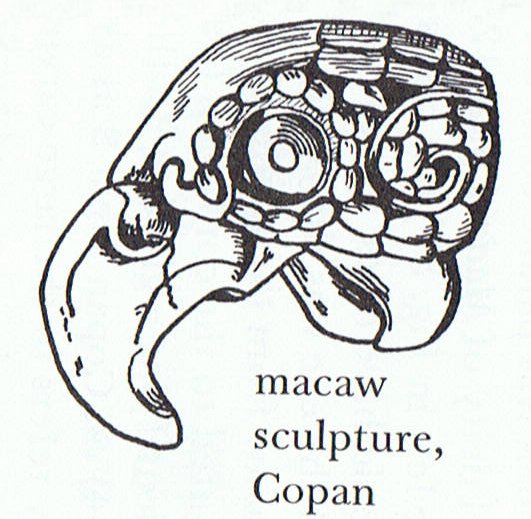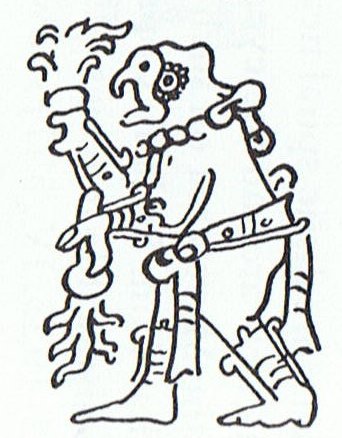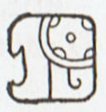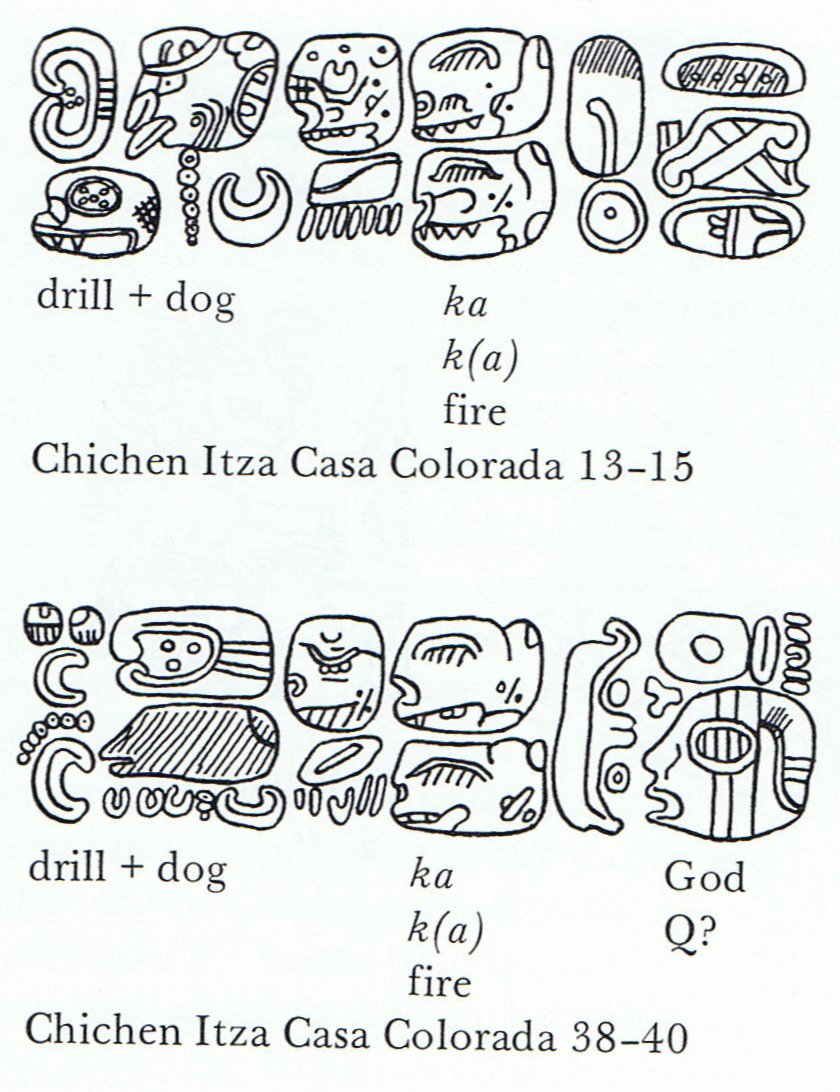|
TRANSLATIONS
This night my subcouscious mind called my attention by showing me an upright hook (open towards right). What did she mean? One meaning I determined after a while. The hook with point towards right corresponds to the opposite of that spiral which envelops the 'black eye' in Macaw:  It is not a figure 8, but rather close (it is open). The sun part is closed, while the moon part is open - symbolizing, I think, the fertility of the moon. Pondering this half asleep in the night, I suddenly reached an insight. In Sweden we celebrate Lucia (a name alluding to 'light') each year on December 13. A date, I realize, which very well could be the complementary number to 17, because 13 + 17 = 30 (as in December in a calendar with 360 days). The 17 dots around the sun eye in Macaw could refer to the rest of the year, beyond Lucia. Lucia involves singing and a light-haired maiden (a virgin), dressed in white and with burning candles in her hair, as the main character (Lucia). The watchers early in the morning are offered coffee, gingerbread and a yellow specially baked S-formed bun ('lussekatt' = 'Lucia cat'). Obviously the yellow 'cat' bun is connected with the sun. The yellow colour of the bun comes from saffron. Ginger bread, I now understand, implies a connection with the kava ceremonies of Polynesia (because the ginger root was used instead of kava on Easter Island and pua was not only a flower but ginger). gingerbread ... A. †preserved ginger ... B. cake flavoured with ginger, formerly often coloured and gilded ... (English Etymology) Instead of two different eyes, as in the strange Macaw representation above, two equal raisins define the two centers of the bun (sun). The shape of the bun is like S, with the spiral arms continuing around the raisins. I wonder if there are two kinds of these yellow buns, one like S and another like its mirror-image. I must check that sometime. The sign of Janus is not good in a two-dimensional representation, because in a two-dimensional world it is impossible for the left Janus head to turn into the right one. Only by living in a three-dimensional world can the old Janus year be turned (in the 3rd dimension) into the new Janus year. But the yellow bun illustrates how it can be done in a two-dimensional world: the path of the sun over the year is fundamentally a kind of cycle, and when moon is taking over the rule from the sun the cycle has to change from clockwise to counterclockwise (north of the equator). That is exactly what the yellow bun illustrates. The two raisins should not be equal. The Macaw picture has different 'raisins', the 'sun raisin' is connected with the part of the bird with a big beak, while the 'moon raisin' is connected with a smaller beak. The spiral arm around the 'moon raisin' has the same shape as the sting of the scorpion (suggesting the 'death' of the sun):  Macaw is a kind of Janus-bird, replacing the true sun, masquerading as another bird:
Young moon takes over when sun leaves, in Pax, while Macaw comes later, presumably in 'January'. But where in time is 'January'? Is it the Kayab month (number 17)? The turtle's beak and the beak of Macaw agree in general shape, and maybe we should also include the jaw of the jaguar, making a triad (like those 3 black dots in Pax):
Presumably the three dots in the ear of the Jaguar represent the morning, noon, and evening sun positions in Likin (east), which then become inverted in Ahau, (20 - the Lord):
I think we can identify morning sun with sea (turtle), noon sun with land (jaguar), and evening sun with sky (macaw). The double circle sign at noon could mean the conjunction between sun and moon (who 'owns' north and south). Maybe we should imagine the pu glyph variant without 'holes' as oriented east - west:
By the way, I just happened to read in Kelley: "Cyrus Thomas ... drew attention to a 'representation of an idol head in a vessel covered with a screen or basket'. Above it was the glyph also found for 'twenty', Yucatec kal, and he pointed out that kal also 'signifies to imprison or inclose which is certainly appropriate to what we seen the figure'. It may be pointed out that Tzeltal shows a comparable semantic parallelism, for tab is both 'twenty' and 'tie'. However, 'inclose' is the more relevant term here, and Yucatec kal seems a preferable reading. It may be pointed out that the 'twenty' glyph appears at Yaxchilan as an apparent epithet of the ruler Bird Jaguar. Yucatec kal is cognate with Huaxtec ts'ale 'king' and with Quiche q'alel, a title, the head of a group, and is probably included in Yucatec ixikal 'seńora principal' ('noble lady'). I would, therefore, translate it 'the great ruler'." The idol head in the vessel, I think, represents the ruler at the time of conjunction. He is caught. The international date line goes through all latitudes. On Hawaii, anciently, the date line probably was determined by the 'breaking of the coconut': ... The correspondence between the winter solstice and the kali'i rite of the Makahiki is arrived at as follows: ideally, the second ceremony of 'breaking the coconut', when the priests assemble at the temple to spot the rising of the Pleiades, coincides with the full moon (Hua tapu) of the twelfth lunar month (Welehu). In the latter eighteenth century, the Pleiades appear at sunset on 18 November. Ten days later (28 November), the Lono effigy sets off on its circuit, which lasts twenty-three days, thus bringing the god back for the climactic battle with the king on 21 December, the solstice (= Hawaiian 16 Makali'i). The correspondence is 'ideal' and only rarely achieved, since it depends on the coincidence of the full moon and the crepuscular rising of the Pleiades. Hua tapu, full moon, must be there, and also the Pleiades, which 'in the latter eighteenth century' appeared at sunset on 18 November. Depending on when full moon occured, there is a span of 29.5 nights beginning on 18 November. Lucia lies in the interval, but not winter solstice. If the pattern is reliable, it means the Hawaiin 'date line' (breaking the nut) comes earlier than solstice (Macaw, the Janus-bird). The patron of Pax cannot be Macaw, it must be the young (virgin) moon, perhaps identical with Ixikal, the Noble Lady. Therefore, I guess the following pattern describes it:
The three dots of Pax refer to the Jaguar. But there is another association, equally valid, viz. it represents fire (because three dots mean the three stones of the cooking hearth):
Inside the perimeter of the drill glyphs there are three stone dots - fire is created in the 'drill'. Of course we must include a sexual interpretation, with new 'life' being generated by a conjunciton between the male 'fire stick' and the female 'hand'. The kava ceremony is a conjunction between male and female. Lucia is waiting for One Hunaphu. It would not surprise me if ka, the fire, is 'cognate' with Polynesian ká:
|







